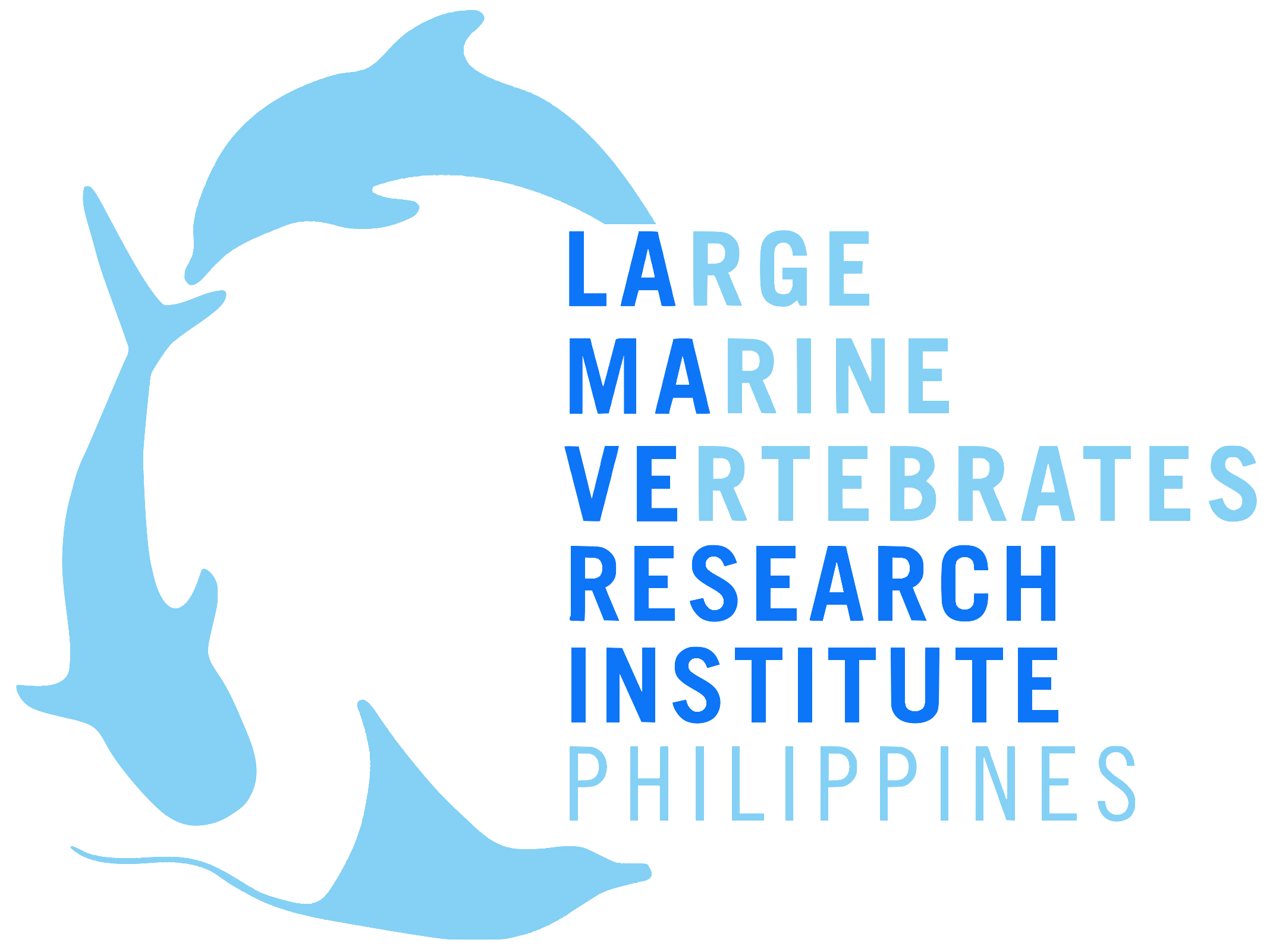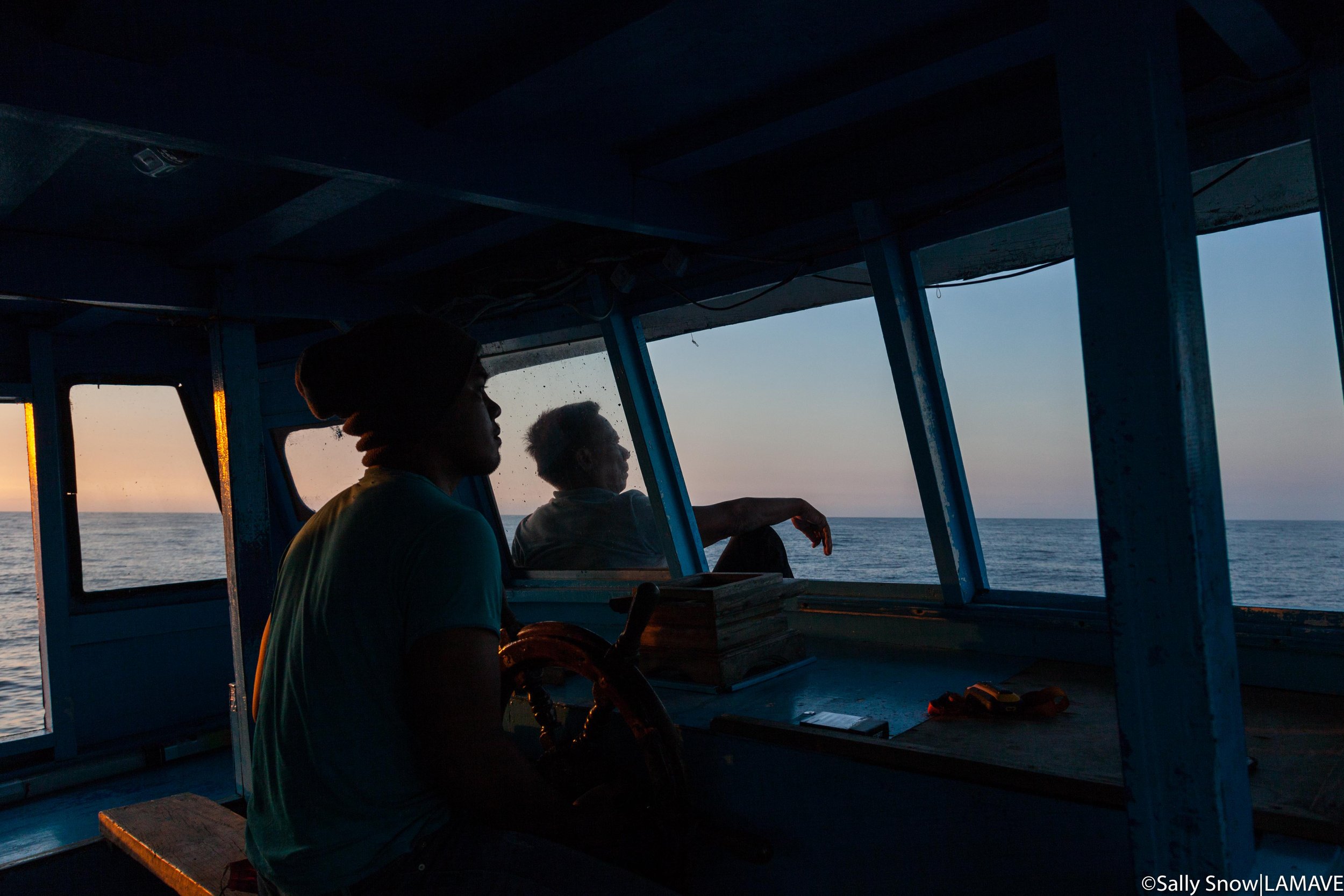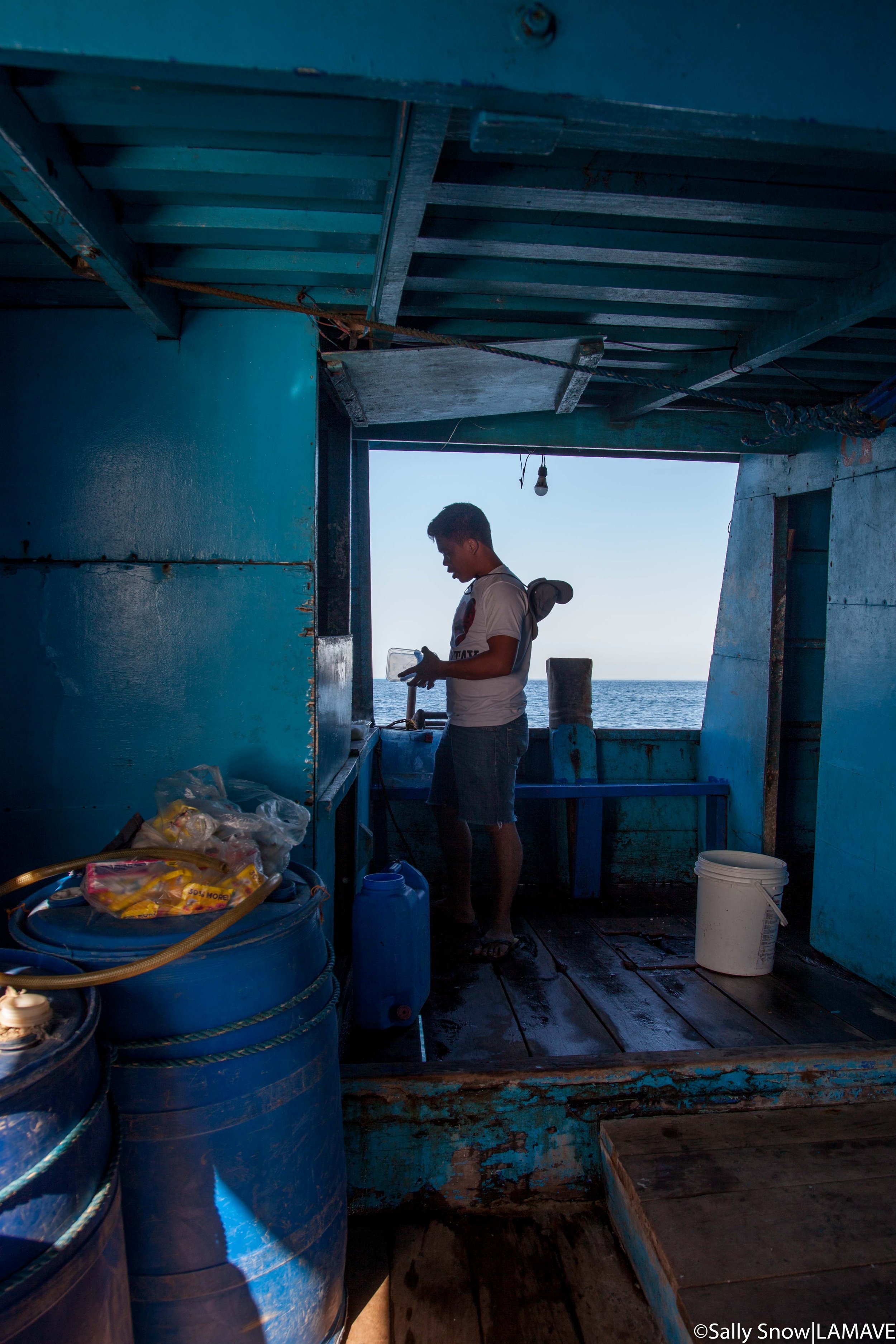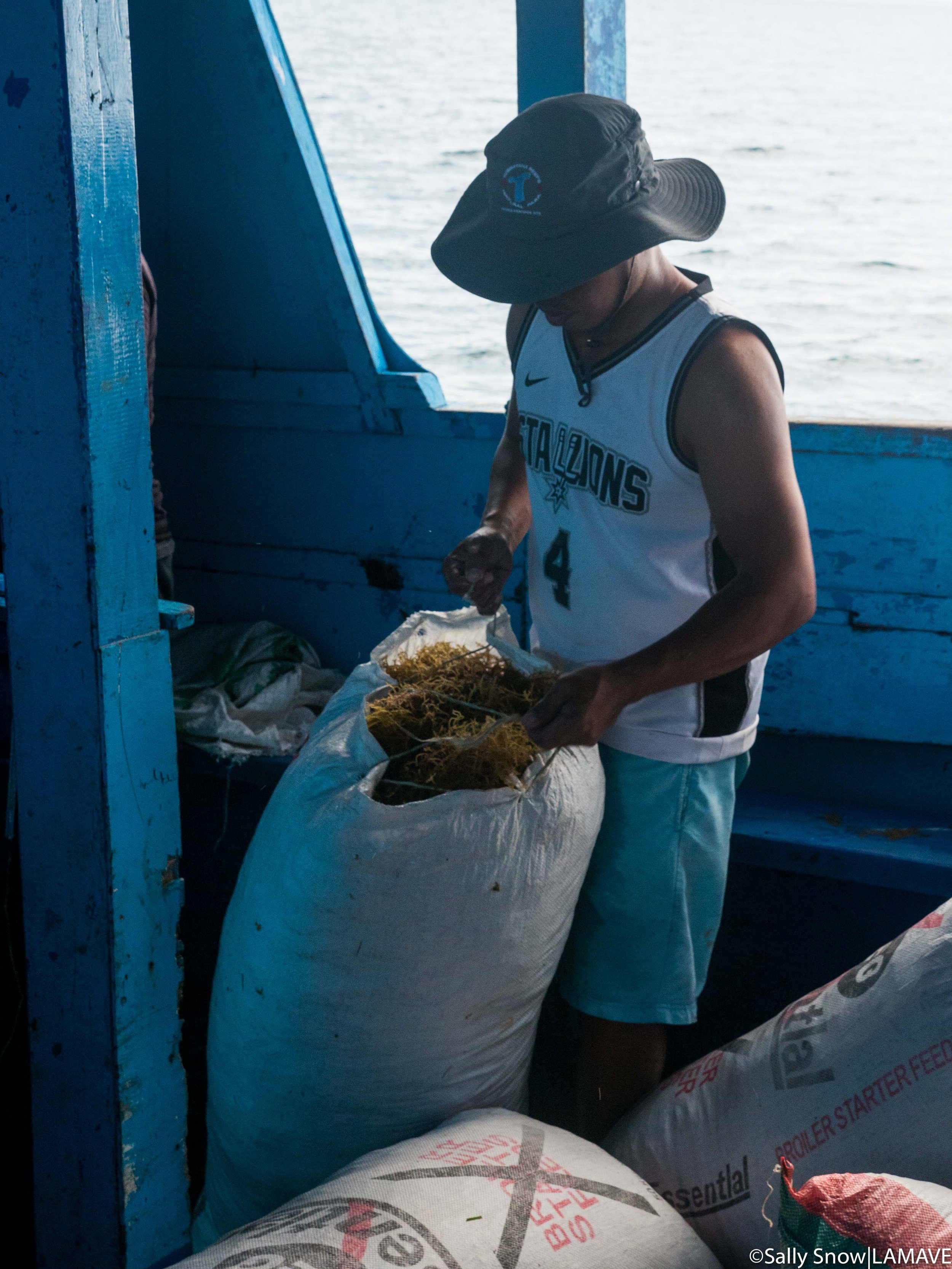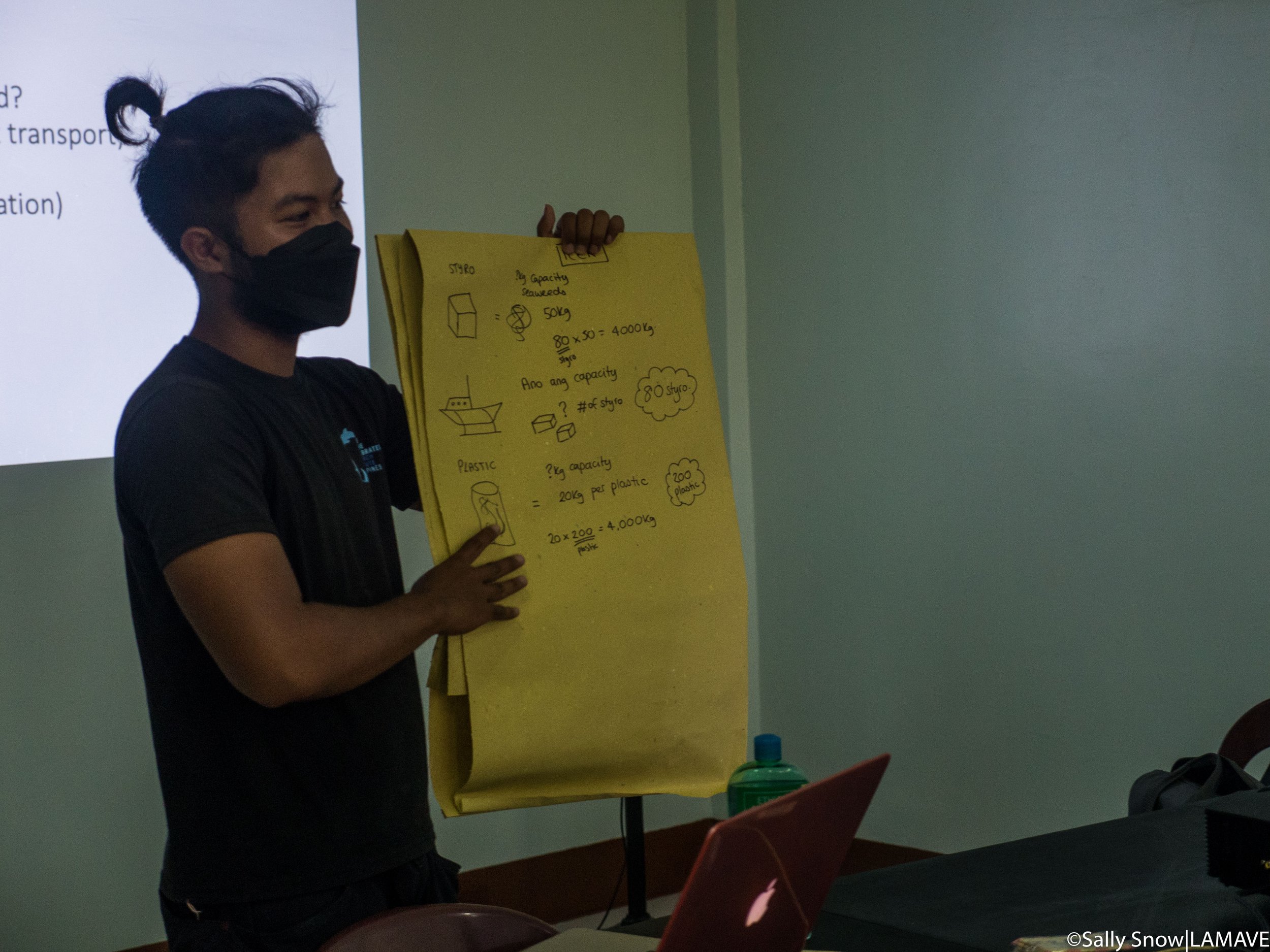STORY
The Typhoon and the Seaweed Farmers
In December 2021, we launched a fundraiser asking you to support communities affected by Typhoon Odette (international name: Rai) including seaweed farmers in the remote island municipality of Cagayancillo, Palawan, Philippines. You responded and together we raised ~795,000PHP (~USD$15,000). In February of this year, LAMAVE’s Sally Snow and Titus Cañete, along with Kymry Delijero (WWF-Philippines), travelled to Cagayancillo to carry out the on-the-ground efforts of LAMAVE’s #TyphoonOdette Relief Fundraiser, including sourcing 20+ tons of seaweed for farmers who lost all their crops. LAMAVE Director Sally Snow shares an insight into the trip.
Seaweed farmers prepare seaweed seedlings on a beach in Caluya ready to transfer to MY Kenash and travel to Cagayancillo.
16 February 2022. Onboard M/Y Kenash, traversing the Sulu Sea northwards
Bang, my body lands against the wooden floor of the Iansia (local cargo boat) as we go over yet another wave. The boat is light, empty and every wave lifts me up and pushes me back down as we move across the northern Sulu Sea towards Caluya in Antique. It’s dark and I am meant to be sleeping, but the sea is jumping up and touching my face, keeping me alert with its salty tang, even all the way up here on the second floor. I am onboard MY Kenash, a lansia from the municipality of Cagayancillo. With me is Kymry Delijero, the captain, and the crew, and we are on a relief mission.
We left Cagayancillo two days ago and tomorrow we will arrive in Caluya, an island I have not been back to since 2013. Once again, I am travelling there because of a typhoon. In 2013, it was because of the devastation brought by Typhoon Yolanda (international name: Haiyan), but this time it is not the people of Caluya that need support, it’s the people of Cagayancillo – ang Kagayanens – specifically the seaweed farming families who lost all their seaweed lines during the onslaught of Typhoon Odette. “100% washout, walang semilia, walang Kabuhayan (no seaweed, no livelihood)” the words of Kap. Niño, the President of the Federation of Cagayancillo Seaweed Planters Association echo in my head.
Hopefully tomorrow we will change that.
LAMAVE Director Sally Snow on the upper deck of a lansia.
The kitchen/dining/soon-to-be-seaweed-hold of MY Kenash
Map showing the journey (dotted line) the team took and the location of Puerto Princesa City and Cagayancillo in Palawan and the island of Caluya in Antique.
When Typhoon Odette made landfall in the Philippines on 16 December 2021, it ravaged so many of our LAMAVE field sites from Bohol, Southern Leyte, and Cebu to Palawan. The devastation was overwhelming and while the team was exhausted, with many impacted by the typhoon in different provinces, we knew we had to utilise your support. We chose to focus on the municipality of Cagayancillo, one of the most remote municipalities we work with and home to the largest marine protected area (MPA) in the country. We recognized that given its faraway location – 20 hours+ journey by boat from the mainland – it would likely not be eligible for much of the relief efforts happening on the mainland of Palawan. The main beneficiaries of our efforts were the seaweed farmers: 964 households. A key group. Why? Because, without seaweed, individuals may be forced to undertake other activities in the MPA that may be less sustainable than seaweed farming – a non-extractive marine livelihood. With your support, we were able to provide materials - lubid - (ropes, rope straw) and seaweed seedlings to establish a nursery and begin regrowing the crops that were washed away by Typhoon Odette and re-establish the seaweed farms. Sending the materials from Puerto Princesa City was straightforward; the big challenge was getting 20+ tons of seaweed seedlings to the remote archipelago.
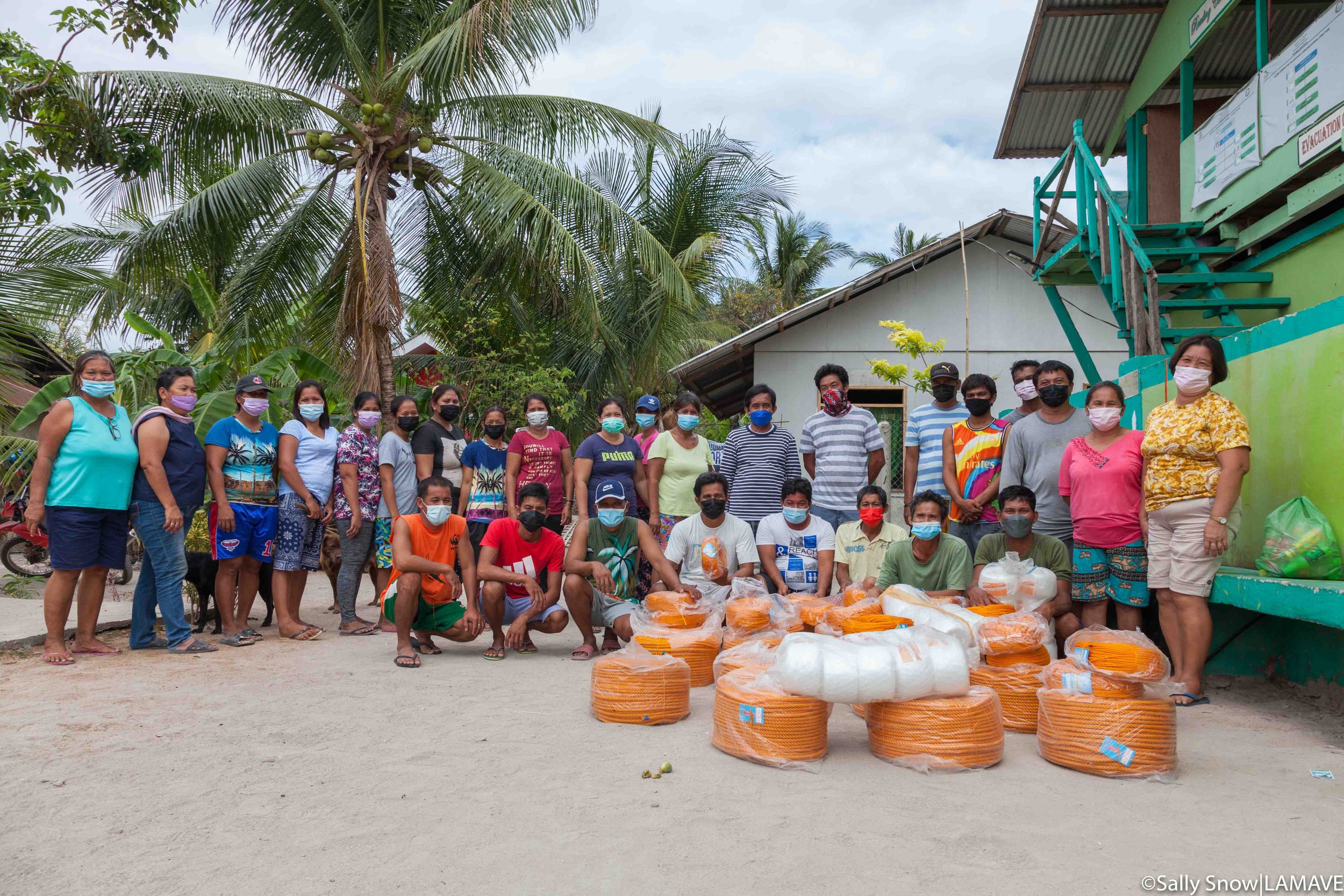
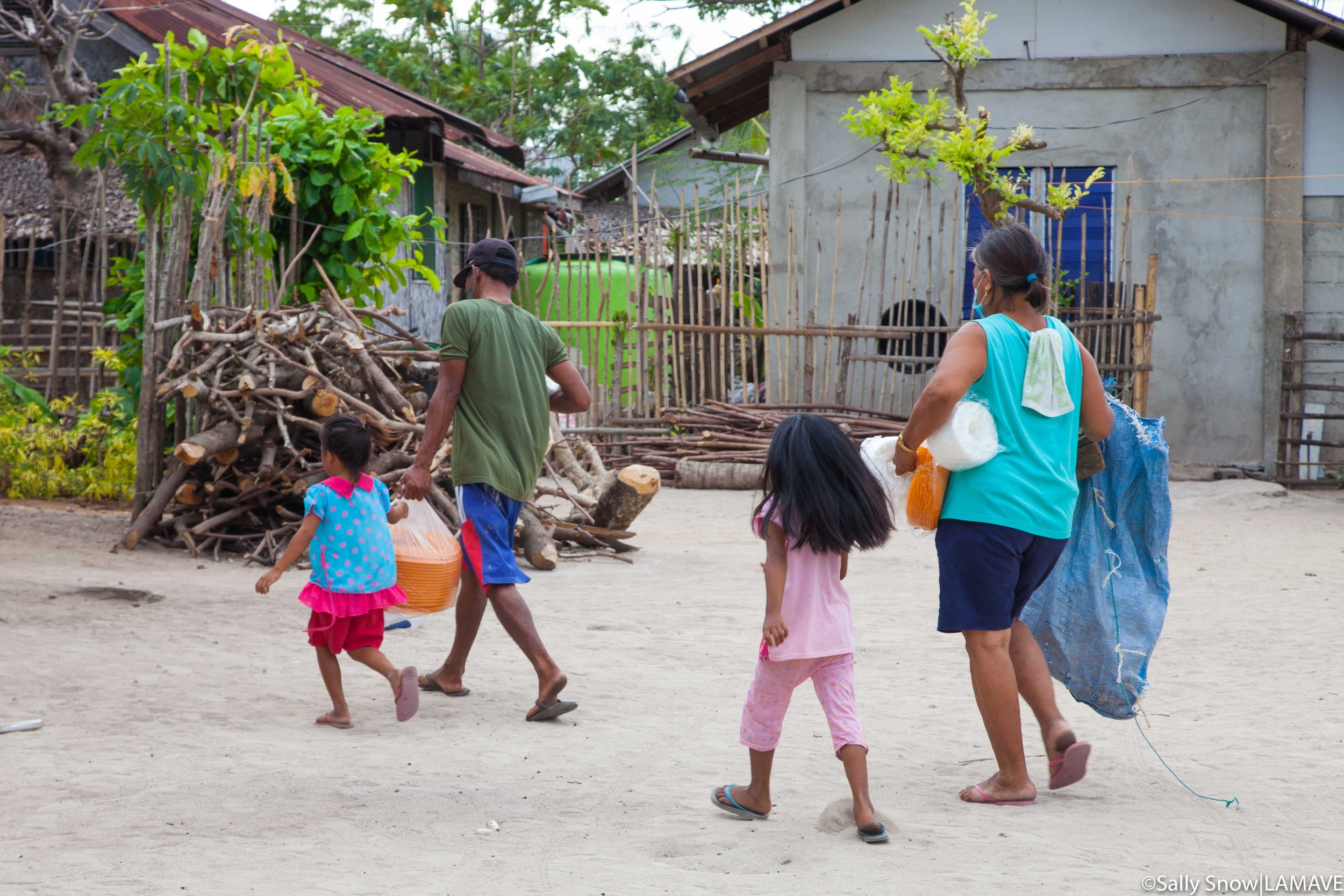
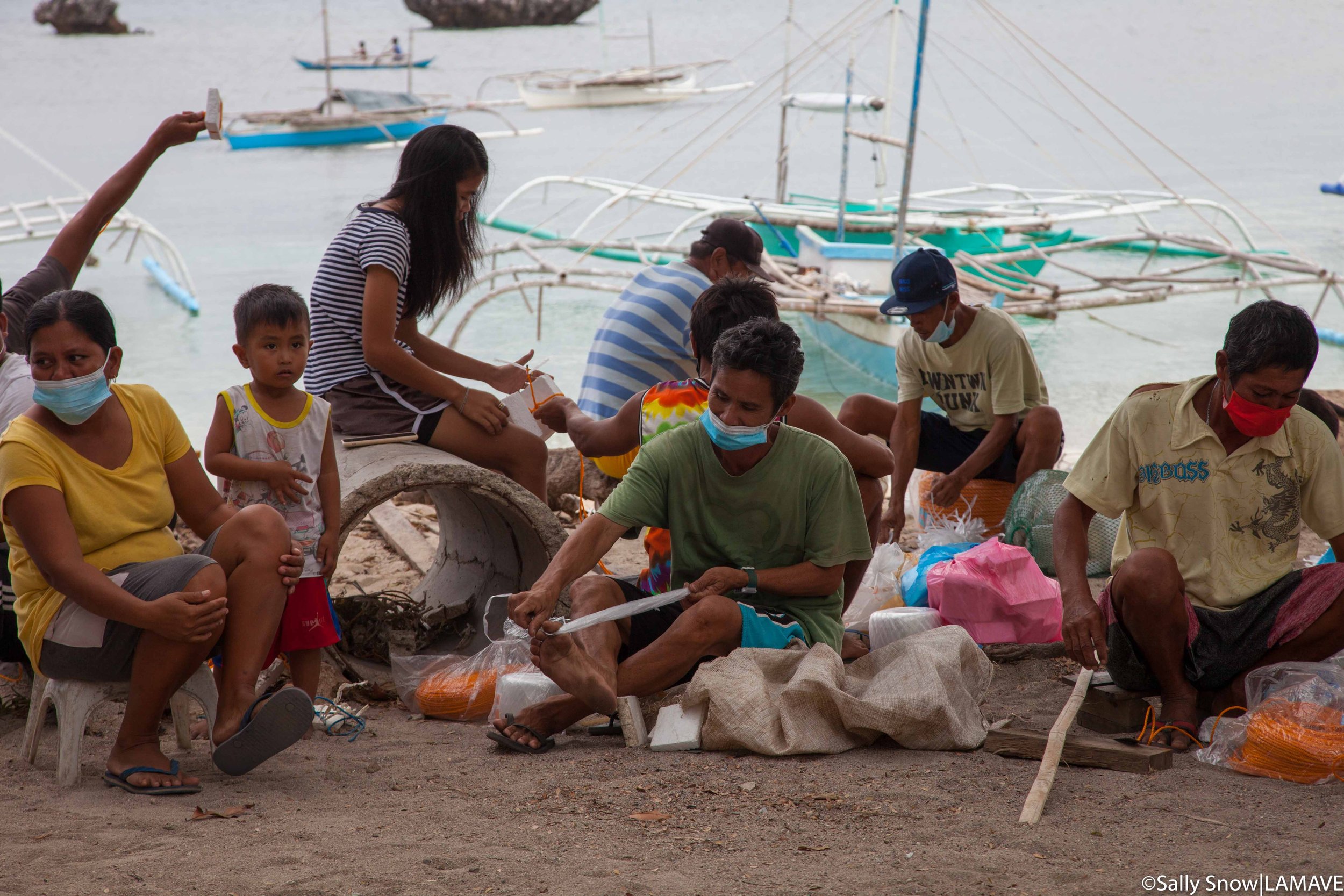
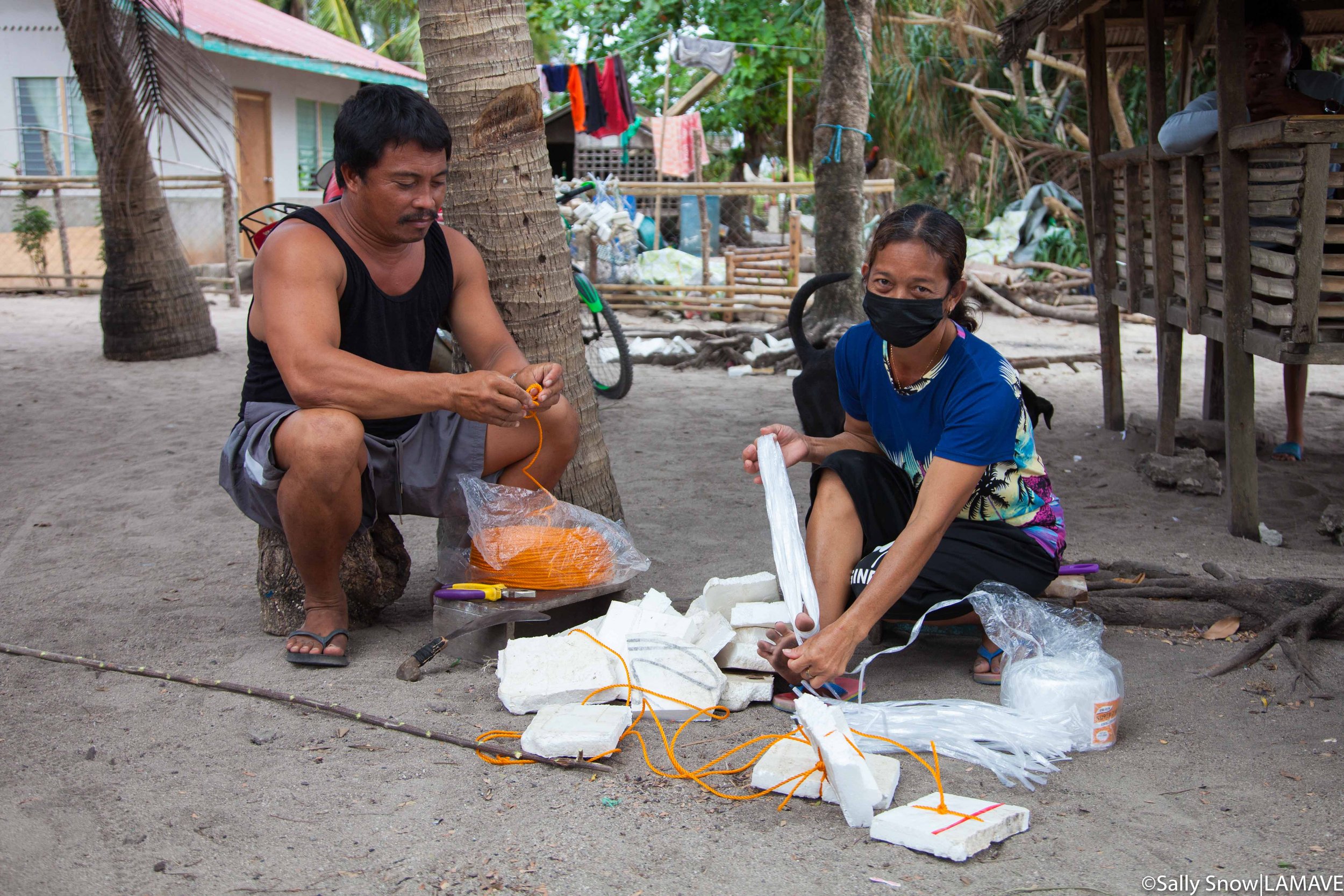
17 February 2022 – Landed at Caluya, Antique, located off the north tip of Panay Island
As the sun rose, a small bangka (boat) appears to whisk us to the main island of Caluya. There on the shore to greet us was Bessie Galilo. I last saw Bessie 7 years ago when I travelled with a small crew to document the devastation brought by Supertyphoon Haiyan (local name Yolanda), which at that time washed away their seaweed. I’m excited to see her and nanay Inday, my Caluya nanay (mother) whom I stayed with during my time there, yet I’m saddened by the irony of how a typhoon has brought us back into each other’s lives. This time, Bessie and her friends will be the ones to supply the seaweed seedlings to help get Kagayanens back on their feet. It’s a strange feeling of coming full circle, one that feels heavy on my chest.
Sally Snow and Kym Delijero travel by bangka from MY Kenash to the main island of Caluya.
Reunited with seaweed farmer Bessie Galilo.
Bessie Galilo and her family photographed by Steve De Neef in 2013.
Bessie Galilo packing seaweed ready to be loaded on MY Kenash.
Kym Delijero and Bessie Galilo talking about the impact of typhoons.
Typhoons are getting stronger, and it feels like no one is spared the wrath anymore. Over kopi (coffee), Bessie tells me that while they were not impacted by Typhoon Odette, they have experienced many powerful typhoons since I last saw her – the most frightening for her personally was Typhoon Quinta – she feared not just for her livelihood, but also for the lives of her family. The rapid intensification of typhoons is becoming more common due to climate change, and the dangers they bring to people and habitats are rising. Climate change does not discriminate, yet there is a clear pattern of who suffers the most from it. The Philippines contributes only 0.35% of global CO2 emissions, yet it is on the frontline and among the worst sufferers of the climate crisis. The greatest action we can do to protect families like Bessie’s, is to take the science seriously and vote and lobby for governments and leaders that implement the actions needed to protect the planet.
We loaded the lansia until dark. Until there was no space left onboard. 21 tons of seaweed seedlings in total. Everywhere you looked there was seaweed and navigating around the boat required my full attention. Even accessing the CR (comfort room/toilet) meant moving a bag of seaweed aside to squeeze into the cubicle.
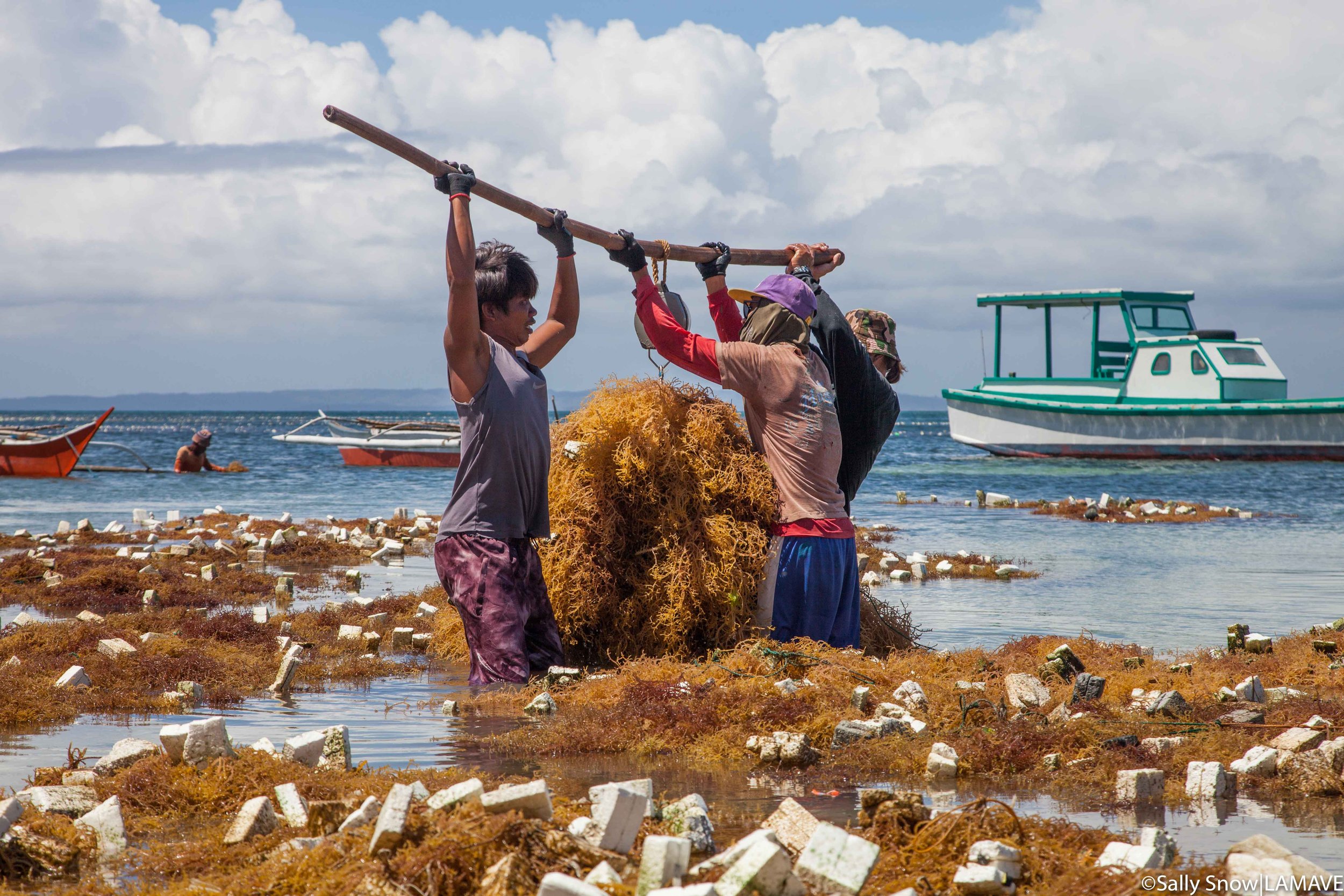
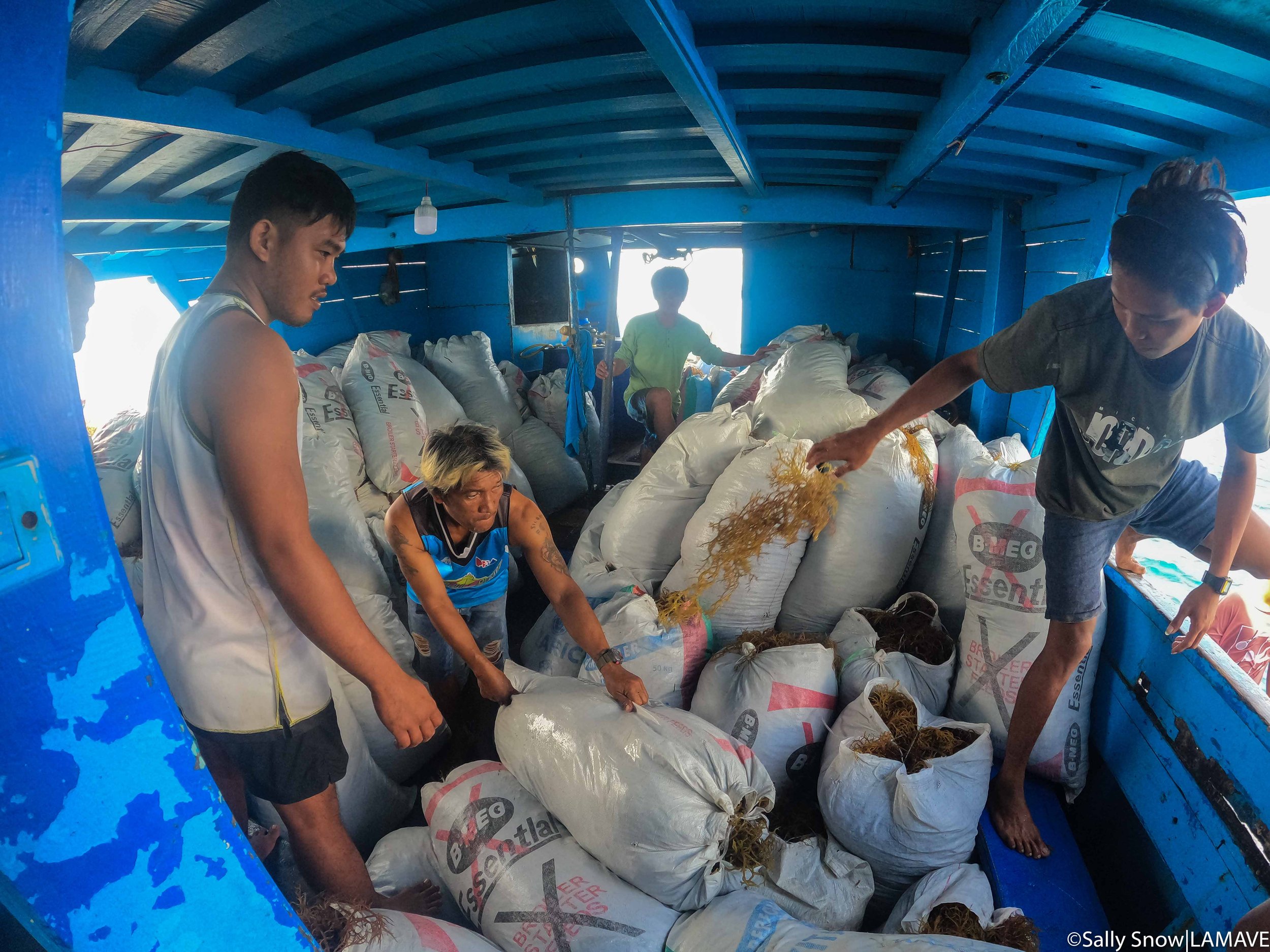
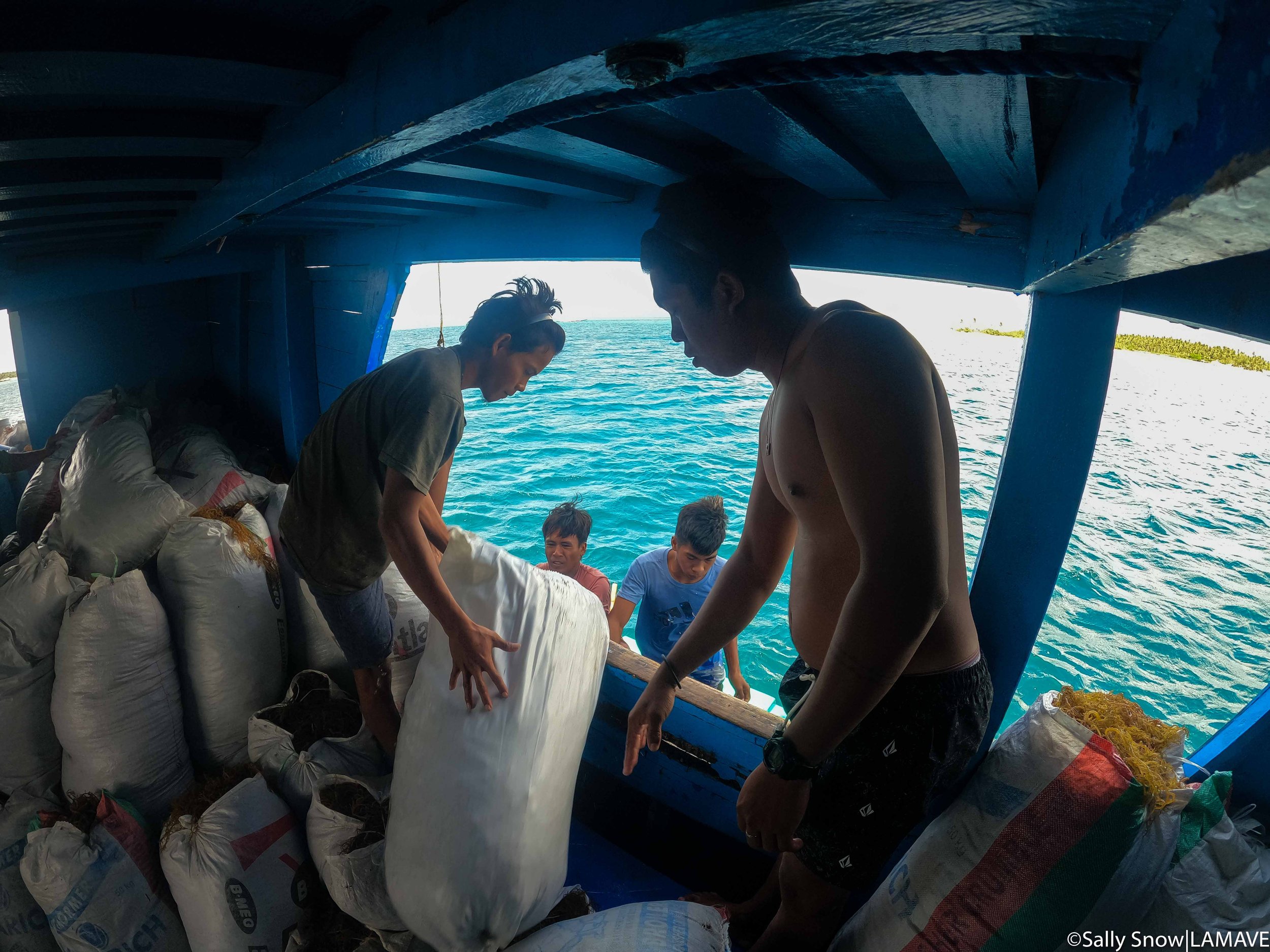
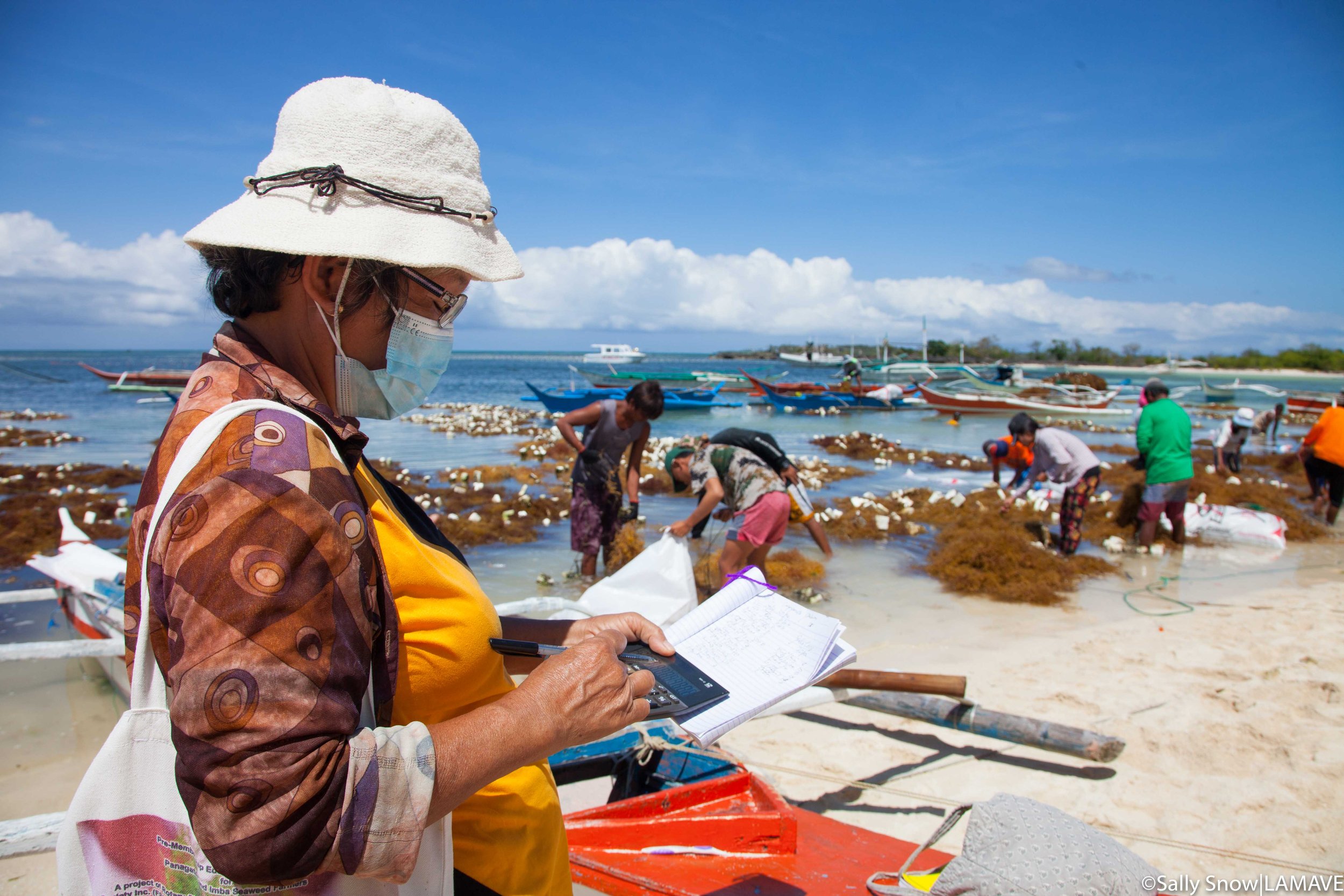
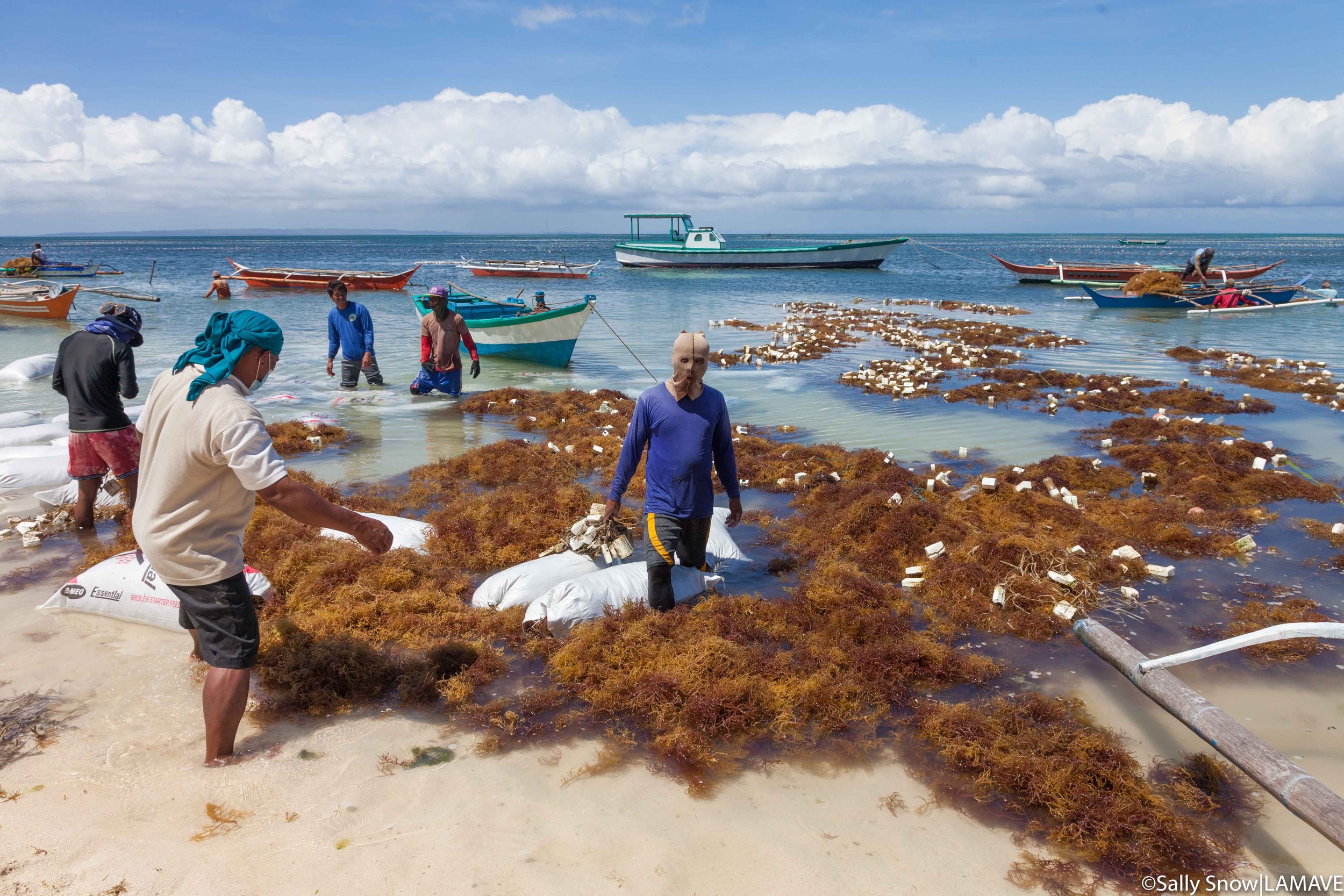
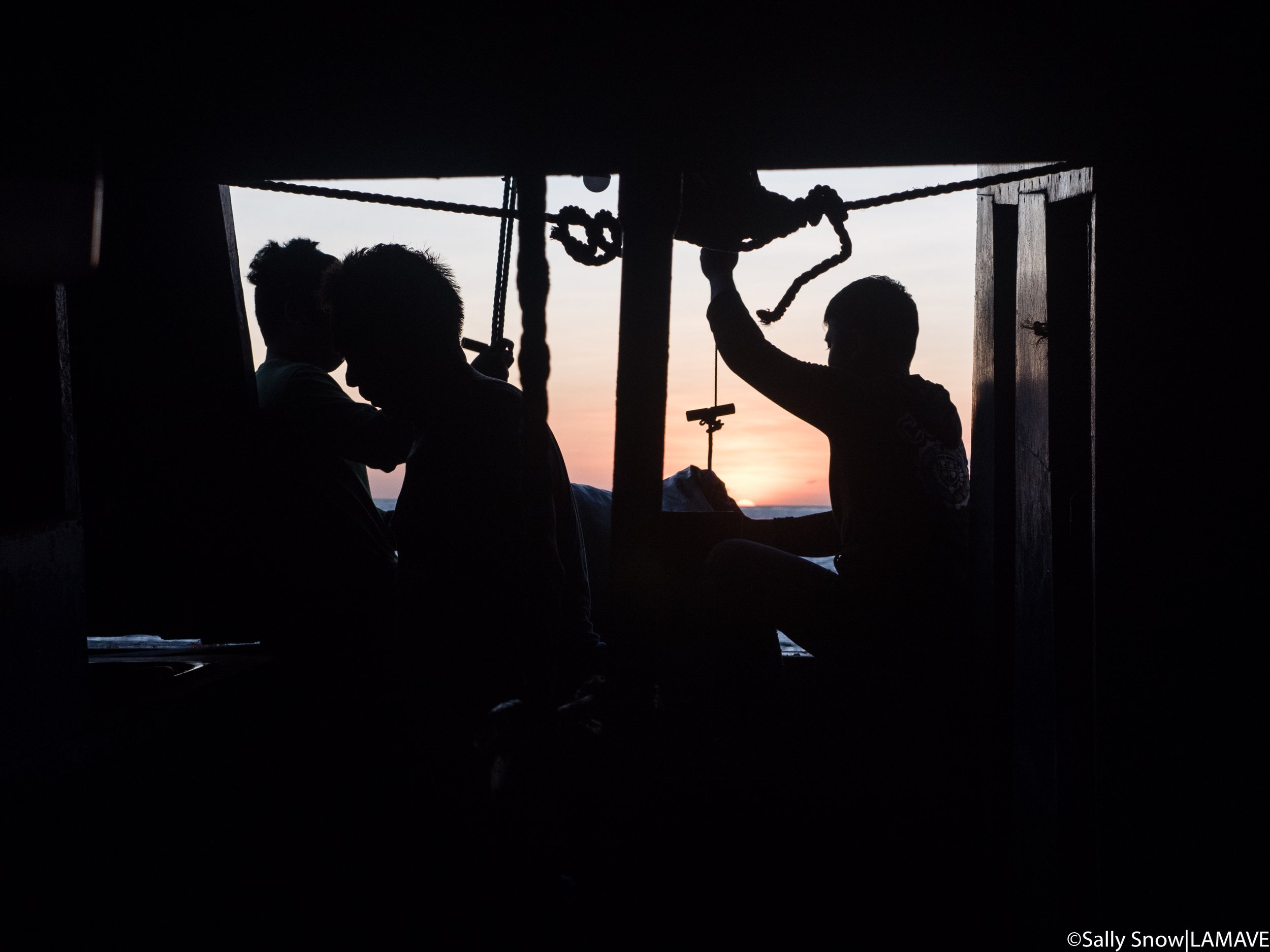
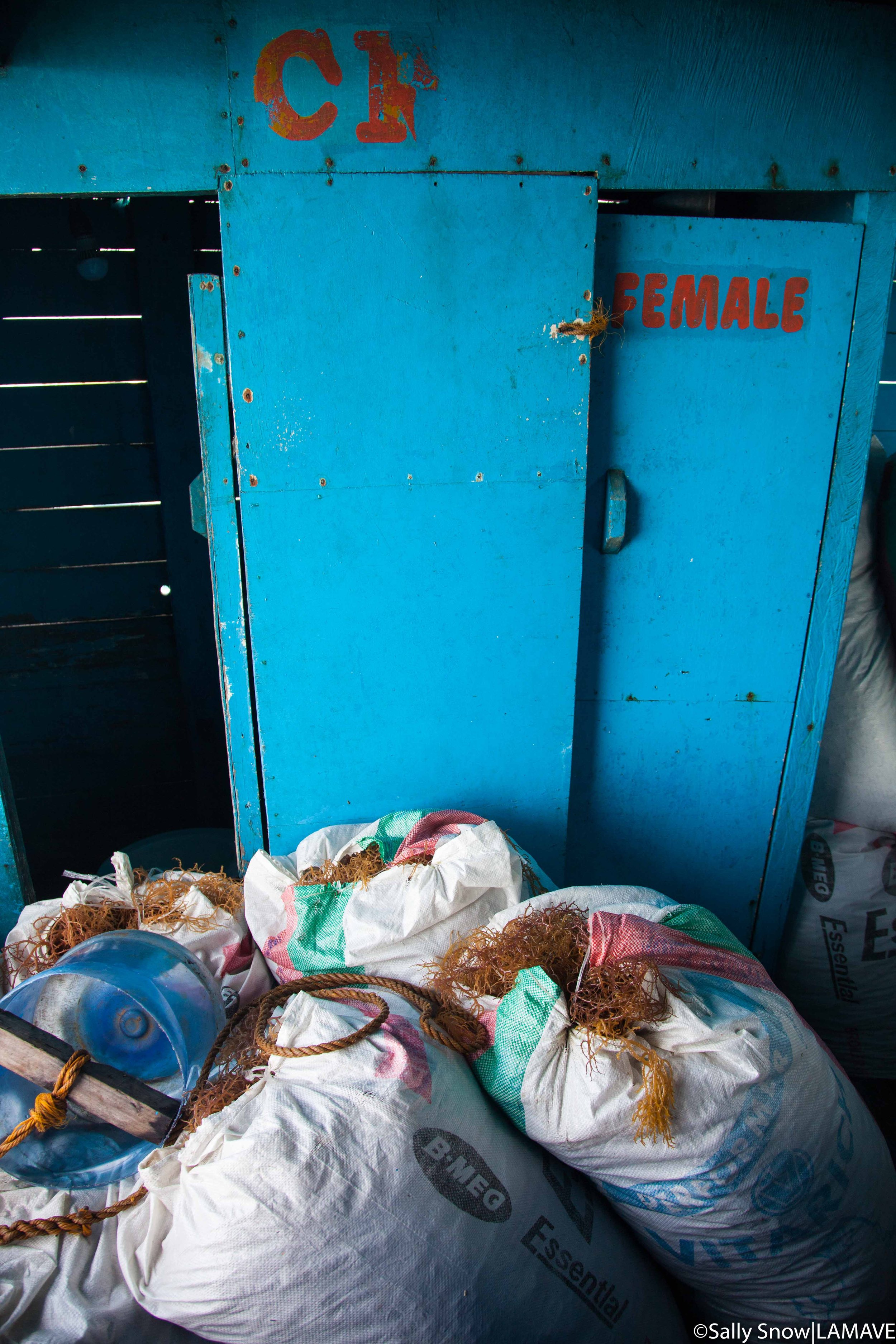
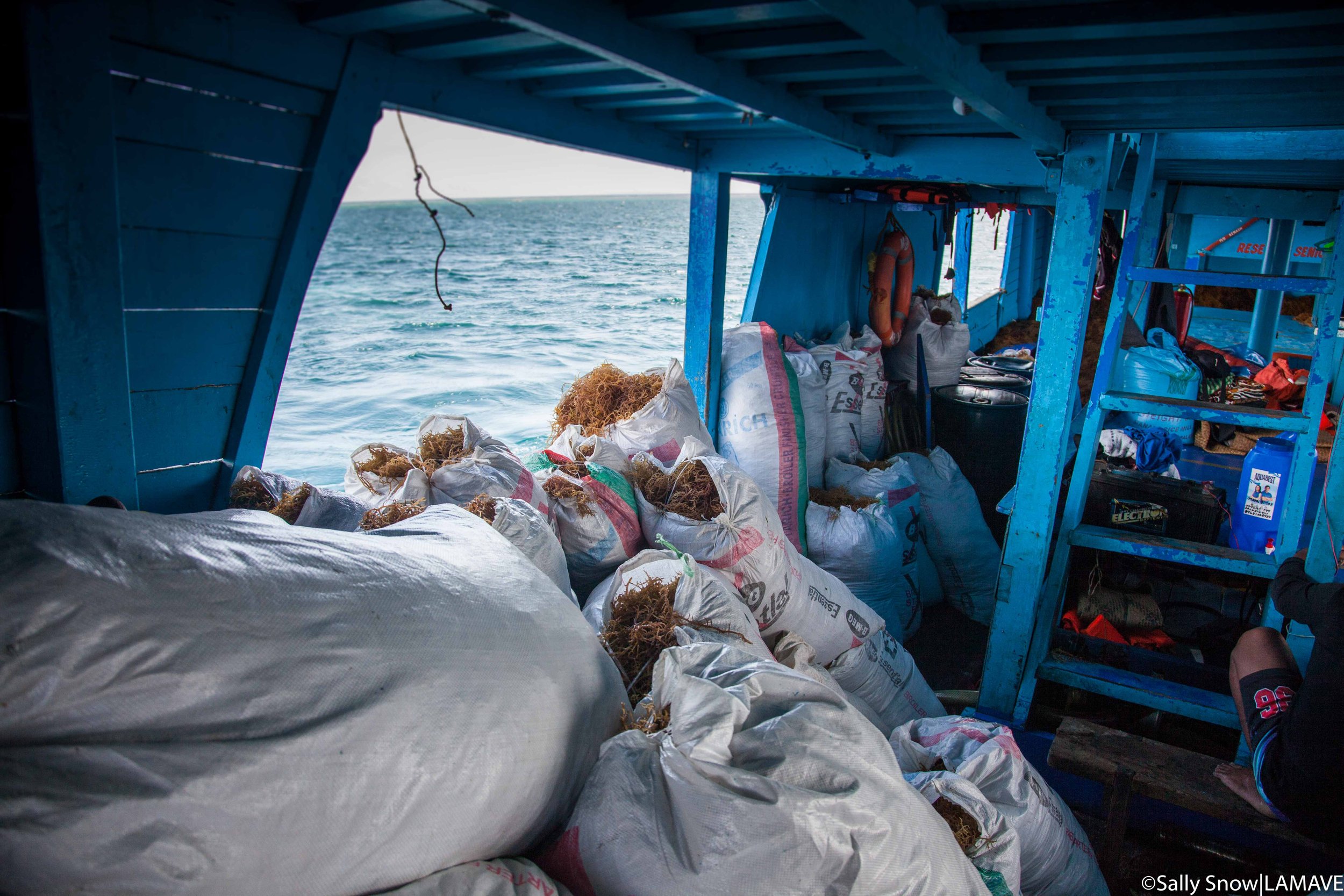
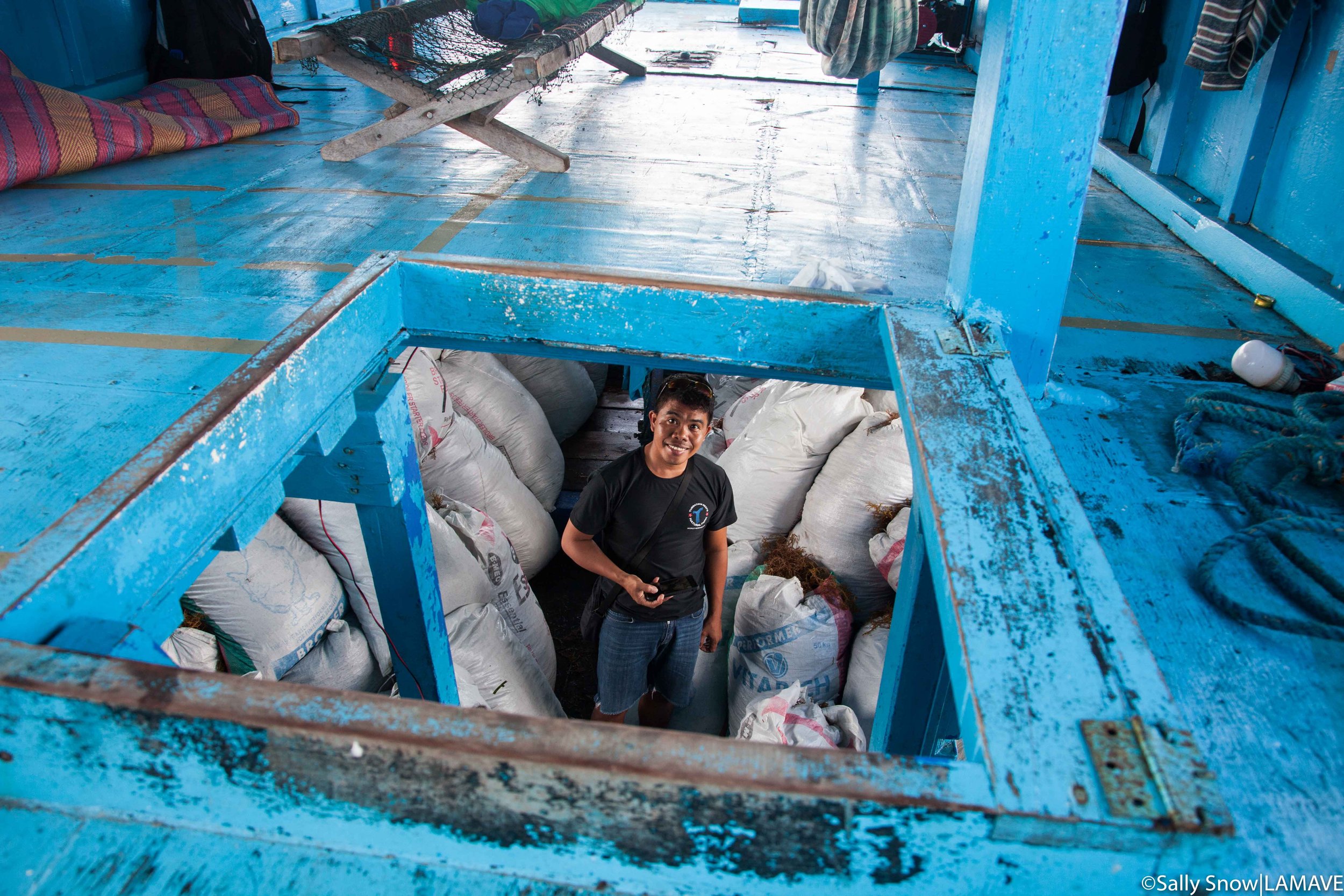
19 February 2022, Back at Cagayancillo, 4 days and 500km+ since departing
The journey back to Cagayancillo took 21 hours. 21 hours of seaweed monitoring, ensuring it was not exposed to the sun or the rain, and that it was staying moist enough, but only with seawater, never with freshwater – that would kill it! It’s been exhausting, but the island is within reach and I’m hoping that soon the seaweed will be back in the sea once again.
News of the arrival of the seedlings spread throughout the community and more and more farmers came to unload the cargo. “Miad na sillem” (good morning in Kagayanen) signalled their arrival as they attached their bangka to the side of the lansia. Each time a person arrived on deck, we saw the shock on their face as they looked at all the seaweed. It is not often you see 21 tons of seaweed at once, and when you do, it’s quite overwhelming. With time being of the essence, the seaweed was unloaded and prepared immediately for the sea – seedlings are particularly vulnerable to stress, so being transferred to seawater was a priority. A few weeks after replanting, it was clear some of the seaweed had become too stressed during the journey to survive, these were dried and sold, with the income going back to support the seaweed farmers. The surviving lines will take 3 months to grow until they can be harvested again, divided, and replanted. With time, the seaweed farmers of Cagayancillo will once again be back in business.
It has been a privilege to be part of this relief effort, but it has also been challenging. When Typhoon Odette hit the LAMAVE team and I in Puerto Princesa City, we had no water, electricity or communications for 5 days, slowly the amenities came back (we were the lucky ones) and we saw the horror of what had happened elsewhere. It was overwhelming to learn what our stakeholders and friends were going through. Jumping into action you, our supporters, our LAMAVE family, responded and made it possible for us to do something. What I did not realise at the time was how long that effort would take and how difficult it would be to execute alongside our daily duties to LAMAVE. Many of our stakeholder sites are still recovering and the feeling of not doing enough is a real feeling, however, if I have learnt something working in conservation, is that there will always be more to do, but the key is that even one small action is enough and the as more people that take those small actions, the closer we will get to making a difference, and for that, I am forever grateful.
A crew member of MY Kenash prepares a rice sack to repack the seaweed seedlings.
Seaweed farmers from Cagayancillo approaching MY Kenash to help unload.
The children of seaweed farmers come onboard to help.
Kap. Nino, President of the Federation of Cagayancillo Seaweed Planters Association and Kym Delijero harvesting seaweed in Cagayancillo.
Michael A. Labajo securing a seaweed line in a shallow bay in Cagayancillo.
Seaweed seedlings attached to a line in a shallow bay in Cagayancillo.
Junlo Carddon packing freshly harvested seaweed.
A big thank you to you, our supporters without whom this effort have been impossible.
This relief project would not have been possible without your support, our donors, the assistance of the LGU of Cagyancillo, the crew of M/Y Kenash, the Federation of Cagayancillo Seaweed Planters Association, IMBA Seaweed Farmers Marketing Cooperative, Remote Area Medical, Luís Buenaventura ll and Yield Guild Games Pilipinas, Philippine Navy and the crew of BRP Mangyan (AS71), the entire LAMAVE team but especially Lorraine Aplasca and Alessandro Ponzo who worked relentlessly on this campaign. Finally, a special thank you goes to Kymry Delijero and Titus Cañete who helped execute the work on the ground and were fundamental to the execution of this relief effort. Salamat sa inyong lahat! (thank you all)
Watch ‘Tambalang’ a 2013 film by Sally Snow and Steve De Neef which looks into the lives of the Seaweed Farmers of Caluya in the Philippines, and their challenge to rebuild what they lost after Typhoon Haiyan. The film features Seaweed Farmer Bessie Galilo, whom Sally was reunited with this year.
